Sony A7ii Good Starter Camera?
Sony has been blazing a trail in the earth of full-frame mirrorless cameras. The newest edition to the Sony Alpha series is the flagship camera, the Blastoff ane. Merely with new features come up impressive price tags.
Sony continues to produce and support older models of their cameras. The price of a Sony a7II is about half the cost of the top-of-the-line a7R IV. In this article, we volition explore the features of the Sony a7II to see if it is still a good camera selection. Tin can yous become the Sony total-frame experience at a lower cost tag?
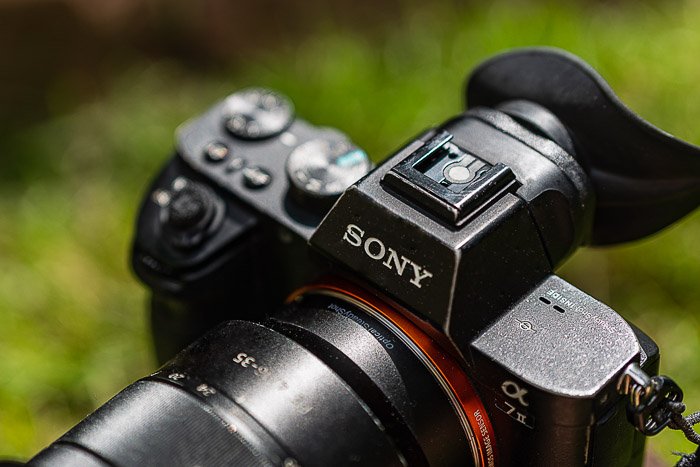
[Note: ExpertPhotography is supported by readers. Product links on ExpertPhotography are referral links. If y'all use one of these and buy something, we brand a little scrap of coin. Need more than info? Come across how it all works here.]

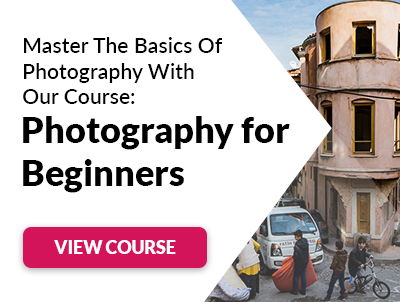
What is the Sony a7II
The Sony a7II (ILCE-7M2) is a total-frame mirrorless camera. Sony released the camera in November 2014 equally an upgrade to the original a7.
Sony designed this camera equally an accommodating, general-purpose photographic camera. It is offered alongside the specialised a7R II and a7S Two. In the Sony line-up, the R-series has higher resolution, and the Southward-series features low-light performance and video. Since the release of the a7II, Sony has upgraded each of the cameras in this series at least once. The company has as well introduced the a9 and a9 2 cameras. These are designed for sports and activity photography. The newest edition to the Alpha range is the flagship camera Blastoff ane.
The most current versions of the cameras in the alpha series are the a7 Iii, a7S III, a7R IV, a9 2, and the Alpha 1.
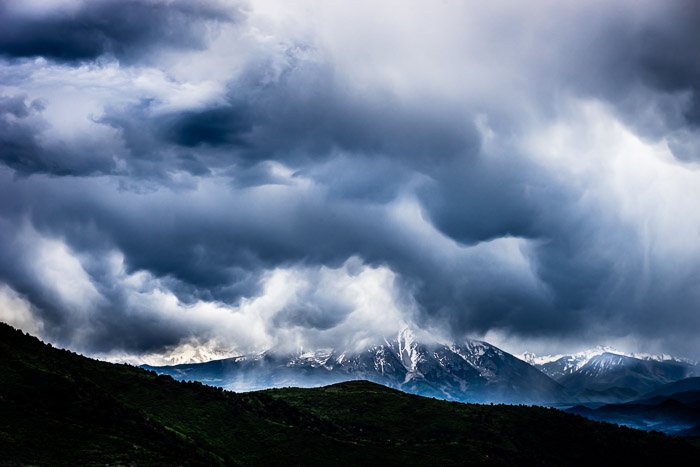
All cameras in the Alpha series are professional or semi-professional person full-frame cameras. Cameras in this series use the E-mount organization. You tin can safely invest in loftier-quality Eastward-mount lenses, knowing that they will piece of work on upgraded camera bodies like the a9 or the Blastoff ane.
Sony also offers a line of advanced amateur ingather-sensor cameras. These also use the E-mount organization, making them bonny backup cameras as they use the same lenses as their total-frame cousins. Only the APS-C bodies are not but watered-down versions of the full-frame systems. Sony oft includes its best features in the crop-sensor bodies. The newest crop sensor photographic camera is the a6600, released in November 2019.
It is like shooting fish in a barrel to go overwhelmed past Sony's mirrorless camera offerings. Comparing the Sony a7II with the flagship Alpha 1 is not reasonable. Y'all can buy iv of these bodies for the cost of i Alpha 1. Simply it is worth comparing the a7II with the upgraded a7III and the newest crop-sensor, a6600, which is currently the same toll.
Who is the Sony a7II Photographer?
The Sony a7II is a full general-purpose, semi-professional camera. It is for an advanced amateur looking for an entry-level total-frame camera. The availability of newer versions of this photographic camera reduces the cost.
Y'all can use this camera in almost travel, street, and family photography situations. As we will encounter in the review, the camera has limitations when it comes to action photography. Photographers who make large prints will be better off with the higher resolution a7R II, Three, or IV. Photographers who do a lot of concert photography, or photograph in other depression-light situations, should consider the a7S 2 or 3.
In terms of price, the a7II is equal to the newest crop-sensor, a6600, and is virtually $500 less than the upgraded a7III.
Key Features of the a7 Mirrorless Cameras
Permit'southward look at some central features of the Sony a7II to assist you lot decide whether this is the camera trunk for you lot. We will pay particular attending to how this camera compares with the upgraded a7III and the crop-sensor a6600.
Sensor and Image Quality
Sensor Size
Sony is one of the world leaders in sensor production. Information technology is not a surprise that their cameras characteristic some of the best sensors around.
The a7II has a total-frame 24.iii-megapixel Exmor CMOS sensor. This gives a maximum resolution of 4000 x 6000. The sensor on the a7III is similar in size (24.2-megapixels) simply uses an improved Exmor R CMOS sensor with dorsum-illuminated (BSI) technology. The a6600 uses a 24.2-megapixel APS-C Exmor CMOS sensor.
It is easy to mistake more than megapixels with meliorate photographic camera quality. But the 24MP size is a good option for many cameras. Information technology balances image size with speed. Though the flagship Alpha 1 model increases sensor size to 50.1MP, Sony has kept 24.2MP sensors on the more expensive a9 serial for sports and activity photography.
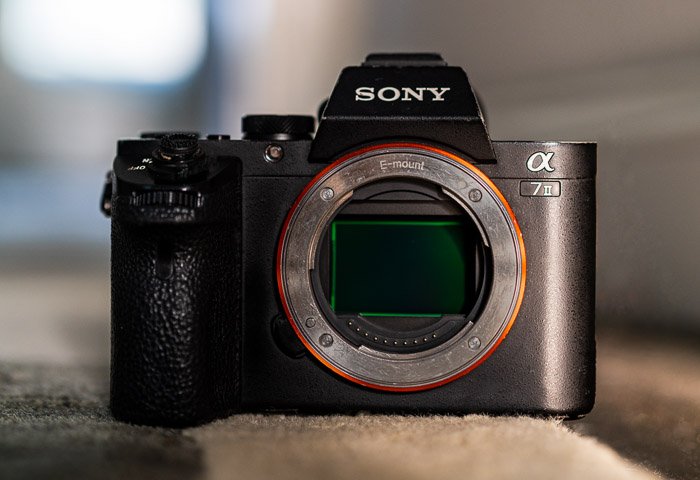
Dynamic Range
The Sony a7II captures fourteen stops of dynamic range. This is like to the a6600. The a7III adds an extra finish of dynamic range. The camera can capture a wide range of light, from dark shadows to bright highlights. The Sony cameras are some of the best on the market in terms of dynamic range. This camera is no exception.
ISO Performance
ISO on the a7II ranges from 100 to 25,600. The results are adept upwardly to ISO 6400. But Sony has improved ISO performance on the newer version of the camera. ISO on the a7III is double the before model (100 to 51,200 expandable to 204,800). In low-light situations, the a7III gives skillful results up to ISO 12,800. The ISO performance of the a6600 falls between the ii. The photographic camera has an ISO of 100 to 32,000, expandable to 102,400.
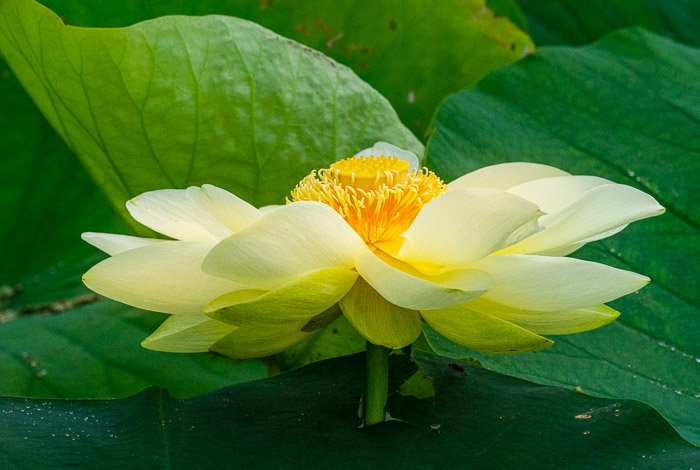
Epitome Stabilisation
The a7II was the first of the a7 series to include in-body prototype stabilisation. It includes v-axis compensation, which has become standard on Sony cameras. This allows y'all to handhold the camera at slower shutter speeds. Even at 1/10th of a second, a proficient percent of shots handheld are in focus.
File Format
On the a7 models, yous have the option of shooting in Raw, JPEG, or both. Yous can choose betwixt iii levels of JPEG quality (standard, fine, or extra-fine quality). In Raw, you can select 14-bit compressed or uncompressed files. The a6600 creates both JPEG and Raw files, but Raw files are compressed.
In general, the a7II creates good quality images at a competitive size with even the more than expensive cameras in the Alpha series. The photographic camera will struggle more than at the higher ISOs, just differences are minimal during everyday shooting weather. The image stabilisation is slightly better in the newer models, but the a7II is well-nigh equally good.
Focusing Organization and Burst Charge per unit
Focusing System
The autofocus arrangement in the a7II was an improvement from the previous generation. The fast hybrid AF system uses both phase- and dissimilarity-detection points. This hybrid system is now standard on Sony cameras.
The a7II includes 117 phase- and 25 contrast-detection autofocus points. Sony has continued to increase the AF speed and tracking capabilities of its cameras. The upgraded a7III has 693 phase—and 425 contrast—detection betoken hybrid AF organisation. This is a pregnant and noticeable increase in focusing ability. The newer model focuses faster generally and is especially in low light situations. The a6600 besides has an improved autofocusing arrangement with 425 phase- and 425 contrast-detection points. The a6600 too includes real-time tracking, which uses AI for faster and more than accurate focusing. The photographic camera analyses colours, patterns, depth, and looks for faces and eyes.
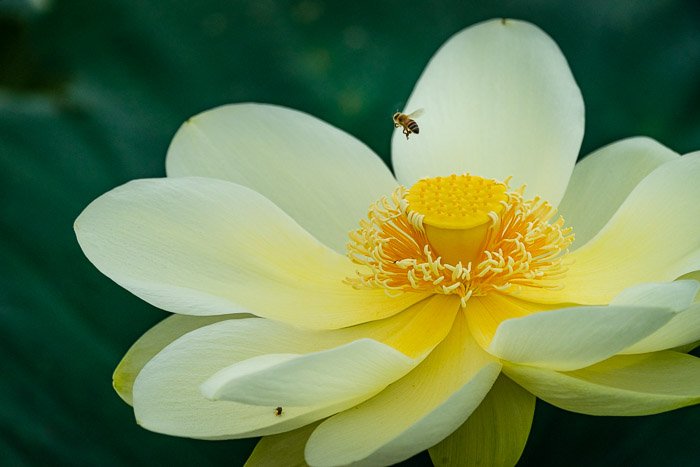
Sony has fabricated significant improvements in autofocus speed and tracking. Simply many photographers will find the autofocusing system in the a7II is all they need. The actress AF points and tracking capabilities of the a7III and a6600 are useful when photographing sports and wildlife.
Face and Centre Detection
The Sony a7II includes confront and detection and recognition. The photographic camera will autofocus on both brute and human faces. Eye detection is also advertised as a firmware upgrade, merely I have never been able to use information technology. Eye detection works only in AF-S mode and with some lenses. None of my Sony Eastward-mount lenses work with eye detection. Only both the face and center detection piece of work well on my a7R Iii.
Burst Rate
Continuous shooting frame rate is another area that Sony has improved in newer versions of their cameras. The a7II has a burst rate of 5 frames per 2nd (fps). This is similar to the frame charge per unit of the original version of the camera. The a7III increases burst rate to x-fps, and the a6600 takes xi-fps.
The newer cameras also accept larger buffers. This camera can handle well-nigh 20 Raw images or 50 JPEGs at full speed. The a7III can handle 89 Raw or 177 JPEGs. The a6600 again lies between the two models and can buffer 46 Raw or 99 JPEG images. The larger buffer means that you tin continue to shoot longer bursts on the newer models. The camera will proceed saving in the groundwork, and you do not take to wait for the buffer to clear. This is only an outcome if you shoot wildlife or sports where you may be using the continuous shooting mode over an extended period.
Video Features
The a7II shoots full HD video at frame rates of 24p, 30p, and 60p in XAVC S format at 50 Mb/southward. Information technology does non take 4K video similar the newer Sony models or the a6600. Both of the a7 models are limited to 29 minutes of video recording. The a6600 records unlimited video.
You lot tin use the camera to create short video clips in Hd. But the a7S series was created to specialise both in low-light photography and video. The a6600 is a better photographic camera for video.
Body and Handling
The a7II was redesigned from the original a7 body. It is slightly larger and heavier than the original, with a more substantial grip. Information technology measures 126.nine ten 95.7 x 59.7 mm (5 x 3.8 x 2.4 in) and weighs 556 g (one.22 lbs.). The newer generations of a7s are largely modelled on the second-generation bodies. Though the grip is again larger to suit larger batteries. The ingather-sensor trunk is smaller at 120 x 66.9 ten 69.three mm (four.72 10 two.63 x ii.73in) and lighter at 503 one thousand (one.11 lbs.).
The experience is not significantly different between the a7III and II. There are more role buttons on the newer versions and a joystick used to motility focus points, and AEL and AF-On buttons. The more recent version moves the video record push button from the side of the camera to a more convenient position near the correct thumb. The C3 customisation push has moved and is controlled past the left thumb.
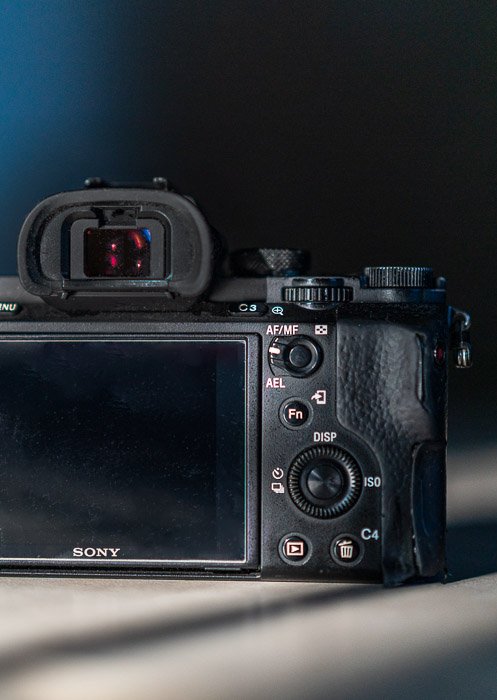
LCD Screen and Electronic Viewfinder
The Sony a7II has a iii inch-articulating LCD monitor with 1,230k dots of resolution. This is slightly better resolution than the newer model. The screen tilts 90˚ to allow for high- or low-level shooting. There is a slight re-pattern in the LCD screen, making the newer generation easier to tilt. But the screens on the APS-C cameras allow for tilt as well as a 180˚ rotation. This is particularly useful when shooting video.
Missing is touchscreen capabilities now standard on the a7 models. This is not necessarily a deal-breaker. But information technology is a sign that this camera is from an older generation of technology.
The a7II has the same electronic viewfinder as the a7III, though the newer model has a slightly college magnification.
Card Slot
The a7II has only one (UHS-one) bill of fare slot. To exist competitive with professional-level DSLRs, Sony now includes two carte slots in the Alpha series. The a6000 serial continues to have only i card slot. One carte du jour slot is fine for most photographers. Only photographers who need the faster UHS-Ii card slot or demand to support their images will observe the missing second bill of fare slot.
Battery Life
The a7II uses NP-FW50 batteries. These are smaller than the newer NP-FZ100 batteries used in the a7III series. You can take about 350 images on one bombardment. The limited battery life is a known problem with the early Alpha cameras. Using this photographic camera means conveying more batteries and planning for frequent recharging.
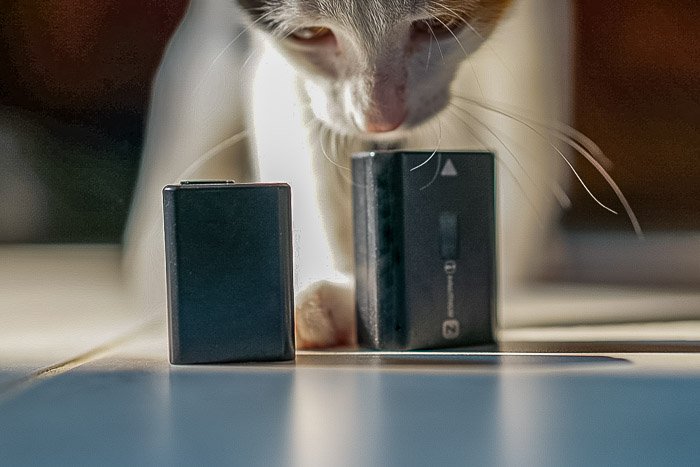
Menu System
Sony has fabricated changes in response to client experiences. Using the older a7II means living with known issues, like a confusing card system. The a7III improves on the carte du jour system, though there are still complaints. Useful in the newer models is the improver of customisable menus. These make finding frequently used features much quicker.
This camera cannot shoot in silent way. But this characteristic is available in the a7R II and a7S II; and the a7III cameras. With a firmware upgrade, Sony also added congenital-in interval shooting to the a7III series. The a6600 includes both silent and interval shooting.
Sony has chosen non to upgrade the menu arrangement. The last firmware update was in May of 2019. But you can download PlayMemories photographic camera apps that add functionality to your camera. For instance, yous tin have double exposures or simulate long exposures without ND filters. The PlayMemories camera apps practice non piece of work on the newer version of the camera.
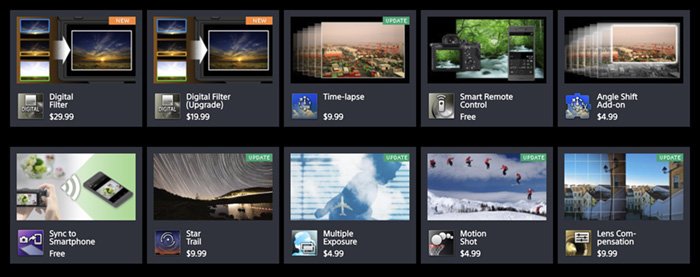
Verdict
The Sony a7II is however a good camera in 2021, peculiarly if you tin find i at a reasonable price. I bought this model soon after its release and continue to carry information technology with me every bit a backup body. The torso has stood up to the wear and tear of travel with few build issues. This image quality is good even in direct comparison to my 3rd-generation bodies. Information technology has nearly the aforementioned dynamic range and epitome stabilisation as the newer versions.
The feel is similar to the newer a7III. In near situations, the slower focusing system and flare-up rate practise non impact my photography. The focusing organization struggles in low-light, and you lot may find it challenging to rails fast activity. The camera has 117 focus points and a outburst rate of 5 frames per 2d.
The upgraded Sony a7III also has a 24.2MP, full-frame sensor. It has 693 focus points, shoots 4K video, and has a burst mode of 10 frames per second. This is similar to the a6600, which has a 24.2MP crop-sensor, 425 focus points, and a burst charge per unit of 11 frames per second. The a6600 is better for video equally it will shoot 4K and has a screen that rotates 180˚.
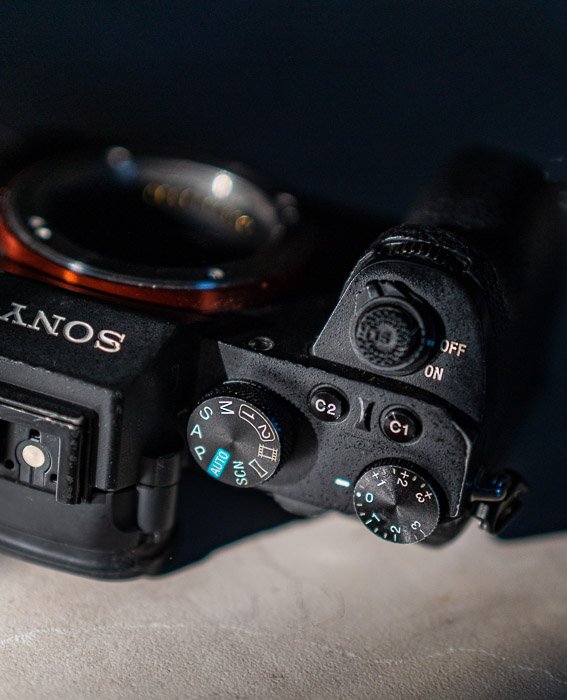
At that place are a couple of drawbacks to the camera. It uses the older, less powerful bombardment system, there is only 1 card slot, and it does non accept touchscreen capabilities.
Buying an a7II on sale or used is an inexpensive way of getting a good full-frame, mirrorless camera. Quality E-mount lenses are worth the investment equally they will transfer as you upgrade to newer Sony bodies. But at full price, the older version is not as bonny as the a7III or the a6600. Instead, consider spending the extra $500 to get the a7III or, for the same cost, buy the crop-sensor a6600.
Scoring
Quality of base features compared to the competition, fifteen/25
Extra features, 10/25
Value, xv/xx
Handling and Ergonomics, 12/15
Structure and Durability, 15/fifteen
Only similar the bumblebee, capture scenic photos of more wild animals in their natural habitats with our Wonderful Wildlife course!
Source: https://expertphotography.com/sony-a7-ii-review/
Posted by: gonzalezdoemon.blogspot.com

0 Response to "Sony A7ii Good Starter Camera?"
Post a Comment